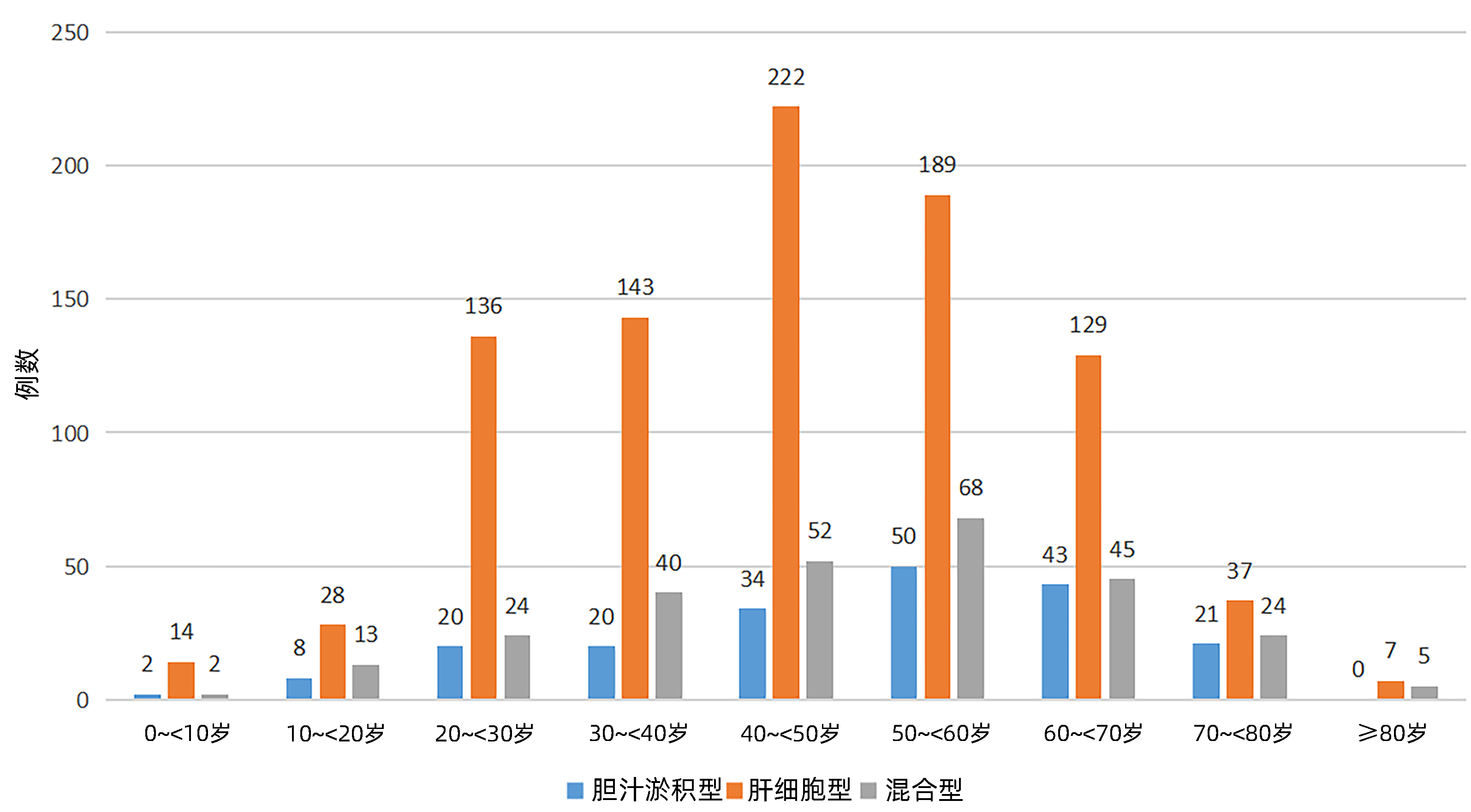| [1] |
Drug-induced Liver Disease Study Group, Chinese Society of Hepatology, Chinese Medical Association. Guidelines for the management of drug-induced liver injury[J]. J Clin Hepatol, 2015, 31(11): 1752-1769. DOI: 10.3969/j.issn.1001-5256.2015.11.002. |
| [2] |
HAYASHI PH, BJORNSSON ES. Long-term outcomes after drug-induced liver injury[J]. Curr Hepatol Rep, 2018, 17(3): 292-299. DOI: 10.1007/s11901-018-0411-0. |
| [3] |
LO REV 3rd, HAYNES K, FORDE KA, et al. Risk of acute liver failure in patients with drug-induced liver injury: evaluation of Hy's law and a new prognostic model[J]. Clin Gastroenterol Hepatol, 2015, 13(13): 2360-2368. DOI: 10.1016/j.cgh.2015.06.020. |
| [4] |
YU YC, MAO YM, CHEN CW, et al. CSH guidelines for the diagnosis and treatment of drug-induced liver injury[J]. Hepatol Int, 2017, 11(3): 221-241. DOI: 10.1007/s12072-017-9793-2. |
| [5] |
DANAN G, BENICHOU C. Causality assessment of adverse reactions to drugs—I. A novel method based on the conclusions of international consensus meetings: application to drug-induced liver injuries[J]. J Clin Epidemiol, 1993, 46(11): 1323-1330. DOI: 10.1016/0895-4356(93)90101-6. |
| [6] |
HAYASHI PH, FONTANA RJ. Clinical features, diagnosis, and natural history of drug-induced liver injury[J]. Semin Liver Dis, 2014, 34(2): 134-144. DOI: 10.1055/s-0034-1375955. |
| [7] |
CHALASANI NP, MADDUR H, RUSSO MW, et al. ACG clinical guideline: Diagnosis and management of idiosyncratic drug-induced liver injury[J]. Am J Gastroenterol, 2021, 116(5): 878-898. DOI: 10.1055/s-0034-1375955. |
| [8] |
|
| [9] |
HE WC, ZHANG KG, ZHAO FH. Clinical characteristics of 290 patients with drug-related liver injury[J]. J Prac Hepatol, 2020, 23(4): 540-543. DOI: 10.3969/j.issn.1672-5069.2020.04.022. |
| [10] |
BJÖRNSSON ES. Epidemiology and risk factors for idiosyncratic drug-induced liver injury[J]. Semin Liver Dis, 2014, 34(2): 115-122. DOI: 10.1055/s-0029-1240002. |
| [11] |
RATHI C, PIPALIYA N, PATEL R, et al. Drug induced liver injury at a tertiary hospital in india: etiology, clinical features and predictors of mortality[J]. Ann Hepatol, 2017, 16(3): 442-450. DOI: 10.5604/16652681.1235488. |
| [12] |
FONTANA RJ, WATKINS PB, BONKOVSKY HL, et al. DILIN Study Group. Drug-Induced Liver Injury Network (DILIN) prospective study: rationale, design and conduct[J]. Drug Saf, 2009, 32(1): 55-68. DOI: 10.2165/00002018-200932010-00005. |
| [13] |
BJÖRNSSON ES, BERGMANN OM, BJÖRNSSON HK, et al. Incidence, presentation, and outcomes in patients with drug-induced liver injury in the general population of Iceland[J]. Gastroenterology, 2013, 144(7): 1419-1425.e1-3; quiz e19-20. DOI: 10.1053/j.gastro.2013.02.006. |
| [14] |
LI YF, HAN SJ, GUO YZ. Clinical characteristics analysis of 103 cases of drug-related liver injury[J]. Chin Hepatol, 2019, 24(4): 386-389. DOI: 10.3969/j.issn.1008-1704.2019.04.015. |
| [15] |
|
| [16] |
ZHANG XY, CHEN HQ, BAI C. Clinical characteristics of drug-related liver injury and its prognostic assessment[J]. Contemp Med, 2019, 25(7): 137-139. DOI: 10.3969/j.issn.1009-4393.2019.07.055. |
| [17] |
ZHANG X. Clinical comparison analysis of drug-induced liver injury by Chinese and Western drugs[J]. China J Phar Economics, 2016, 11(10): 65-67. DOI: 10.12010/j.issn.1673-5846.2016.10.026. |
| [18] |
LI XY, TANG JT. Epidemiology of drug-related liver injury[J]. J Clin Hepatol, 2021, 37(11): 2510-2514. DOI: 10.3969/j.issn.1001.5256.2021.11.002.
|
| [19] |
WANG JH, GUO HD, KONG JJ. Clinical characteristics of patients with drug-induced liver injury caused by anti-tuberculosis drugs and analysis of their risk factors[J]. J Prac Hepatol, 2020, 23(1): 58-61. DOI: 10.3969/j.issn.1672-5069.2020.01.017. |
| [20] |
LEE WM. Acetaminophen (APAP) hepatotoxicity-Isn't it time for APAP to go away?[J]. J Hepatol, 2017, 67(6): 1324-1331. DOI: 10.1016/j.jhep.2017.07.005. |
| [21] |
LAMMERT C, EINARSSON S, SAHA C, et al. Relationship between daily dose of oral medications and idiosyncratic drug-induced liver injury: search for signals[J]. Hepatology, 2008, 47(6): 2003-2009. DOI: 10.1002/hep.22272. |
| [22] |
LI Z, SU H, LENG J. Analysis of the status of drug-related liver damage at home and abroad[J]. Mil Med J Southeast China, 2007, 169(6): 476-480. DOI: 10.3969/j.issn.1672-271X.2007.06.046. |
| [23] |
|








 DownLoad:
DownLoad:

